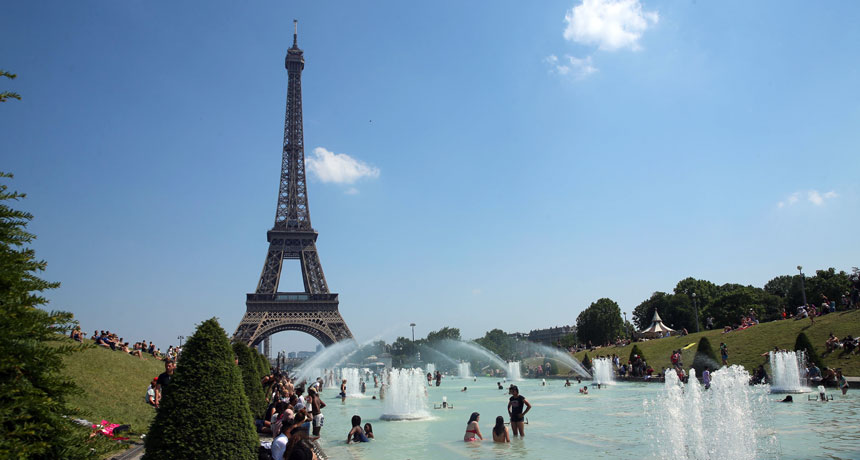Europe’s latest heat wave has been linked to climate change
Global warming driven by human activity made the heat wave at least five times more likely

SWELTERING SUMMER Temperatures were blistering in Paris on June 26, as people sought relief from a brief but intense heat wave in the Trocadero Gardens fountain. A new study finds that climate change made the extreme temperature event at least five times more likely.
Xinhua/Alamy Stock Photo






